It is understandable when soybean cyst nematode is mentioned to view this as old news since Illinois farmers have been battling this pathogen since the 1950s. It is also easy to get lulled into viewing an SCN egg count on a soil test report as being another number, along with soil fertility information. However, SCN cannot be addressed with a single application or approach and will often take several years of active management to begin lowering the amounts of the
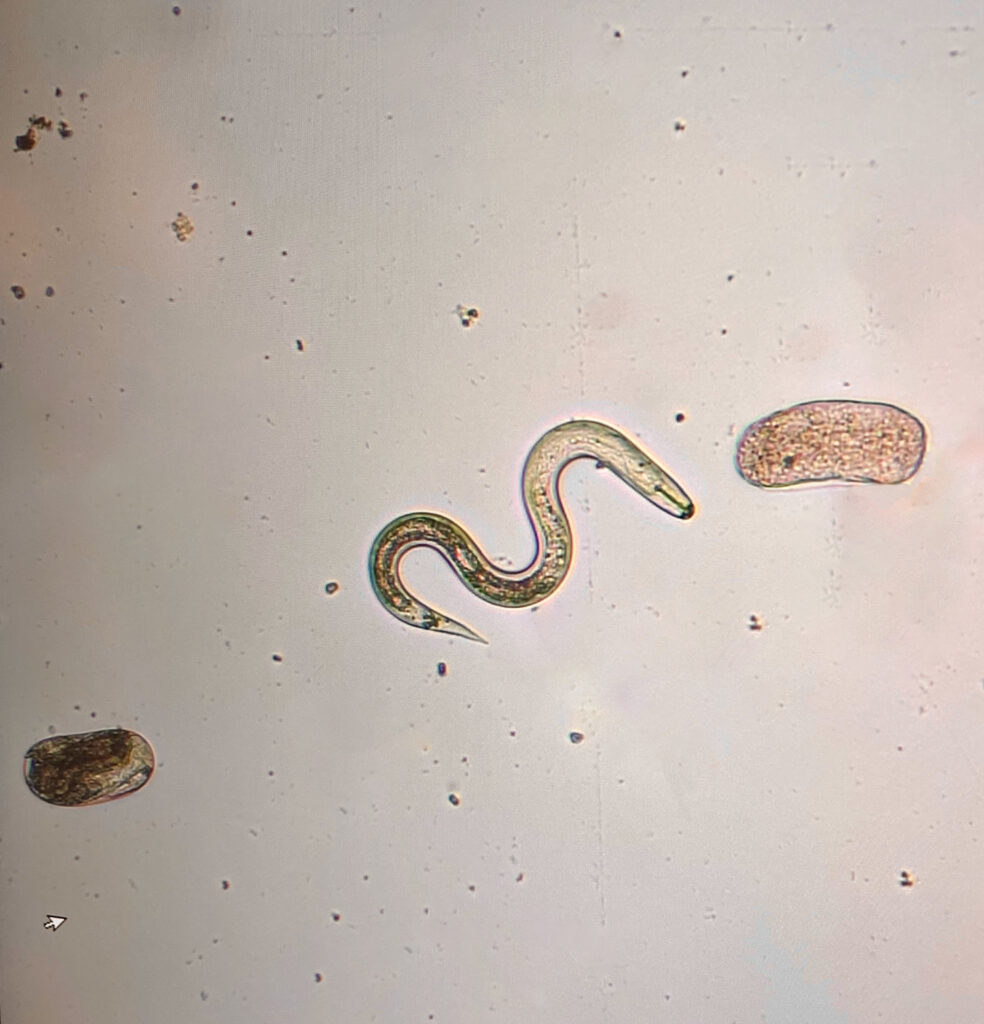
Soybean cyst nematode juvenile and eggs from extracted soil samples. (Provided by Jason Bond)
pathogen in the soil. SCN juveniles hatch from an egg and typically live for 3-4 weeks once these microscopic roundworms parasitize the soybean plant. Each female will produce several hundred eggs, with the majority stored inside her body and a small amount (10-60 eggs) stored outside her body. The eggs outside her body are immediately infective and will hatch, continue infecting roots, and produce more offspring with 4-6 reproductive cycles in a field. When the female dies, her body becomes a protective cyst for the eggs, and most eggs have dormancy that will allow them to hatch over the next few years. This staying power is one aspect that makes them so difficult to control.
When SCN is mentioned today, MORE should be the word that comes to mind: more fields infested, more aggressive populations, more numbers in Illinois production fields. Deploying resistant varieties has been a great success story reducing $ billions in losses. However, an overreliance on a single source of host resistance since the 1970s has caused field populations of SCN to adapt and be more virulent on resistant varieties. Today, over 80% of fields surveyed can reproduce on this resistance source and the varieties that contain it. As a result, they are building up higher numbers in the soil. Last year we were amazed to see 100 females on the roots of resistant varieties just 45 days after planting. Now more than ever, we must attack SCN with multiple management
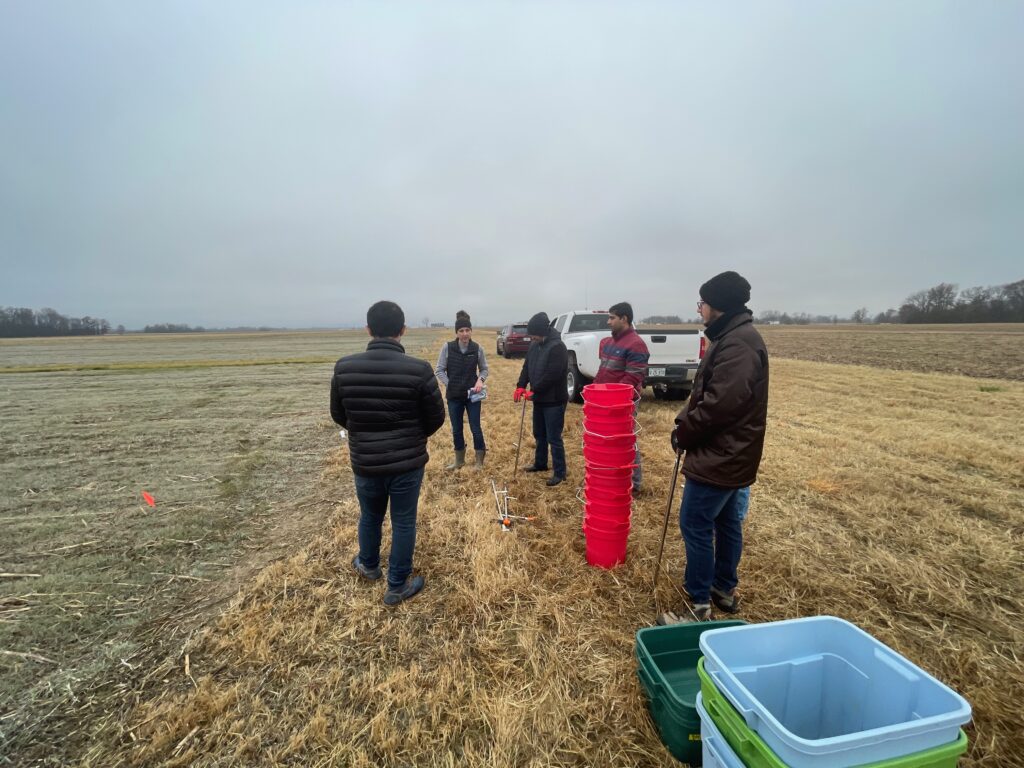
Senior researcher Annie Padgett giving instructions to graduate research assistants at the University of Illinois Ewing Demonstration Center. (Provided by Jason Bond)
options, including resistant varieties, rotation with non-host crops, seed treatments, and cultural practices.
While there has been significant interest in increasing the use of cover crops, there is evidence that specific species can impact SCN prior to and leading into the soybean production year. The late Mike Plummer had a long career with farmer education with the University of Illinois Extension. His teaching and approaches to helping farmers are a legacy still seen today in southern Illinois. Mike was innovative in how he taught about SCN. He would assist farmers with collecting samples from their fields and then teach them how to extract, identify and determine the infestation level of SCN. Later he worked with these farmers to evaluate cover crops in their production systems. Over many years, Mike saw a 25% reduction in SCN populations following a cover crop of annual ryegrass or cereal rye. Recently, researchers at SIU, ISA, and consultants completed large-scale, on-farm trials where double cropping with wheat and soybean caused a reduction of SCN by 32%. The decrease in SCN appears to be caused by changes in the biological and chemical properties of the soil. The production of wheat led to an increase in soil microbe diversity, an increase in antagonistic bacteria and fungi and resulted in chemical properties that are harmful to SCN.
We are following this with an ISA-funded project that is bringing together researchers from SIU, UI Extension, Bayer, the IL Department of Agriculture, and crop consultants to address this question. A unique aspect of this project is partnering with cover crop locations that were initiated to explore the impact on other soil properties and include an SCN component. Currently, 12 cover crop trials at 7 sites from Northern, Central, and Southern IL have been sampled for SCN. Cover crop species include cereal rye, annual ryegrass, clovers, triticale, rape, and hairy vetch. Additionally, trials are being planted into soybean or corn in 2023. Observing how the cover crops impact SCN while growing soybean or a non-host corn crop will be beneficial. Corn being a non-host, may accentuate the benefits of SCN suppression from the cover crop and further deplete SCN in the soil. With preliminary fall SCN egg counts, we have observed a range of SCN infestation levels, with some locations exceeding 3,500 eggs per 100 cc (~1/2 cup) of soil. We will monitor egg counts throughout this season to determine if there is an impact on SCN. If cover crops impact SCN, soil samples will be processed to evaluate associated changes in the microbiome (the other microbes in the soil) through DNA sequencing.
Stay tuned throughout the season to see what we learn in this exciting project! Learn more about this Illinois Soybean Association checkoff funded research here.
Below: Soil sampling Bayer cover crop trials at the Illinois Department of Agriculture Henry White Experimental Farm in Millstadt, IL
(Provided by Jason Bond)

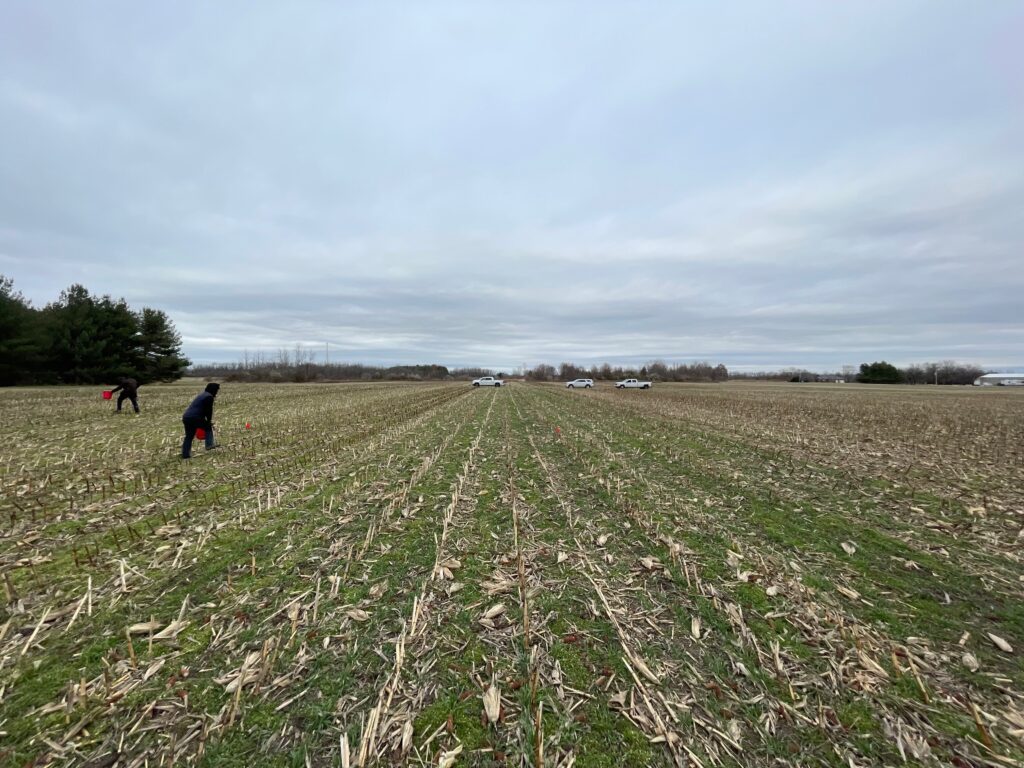
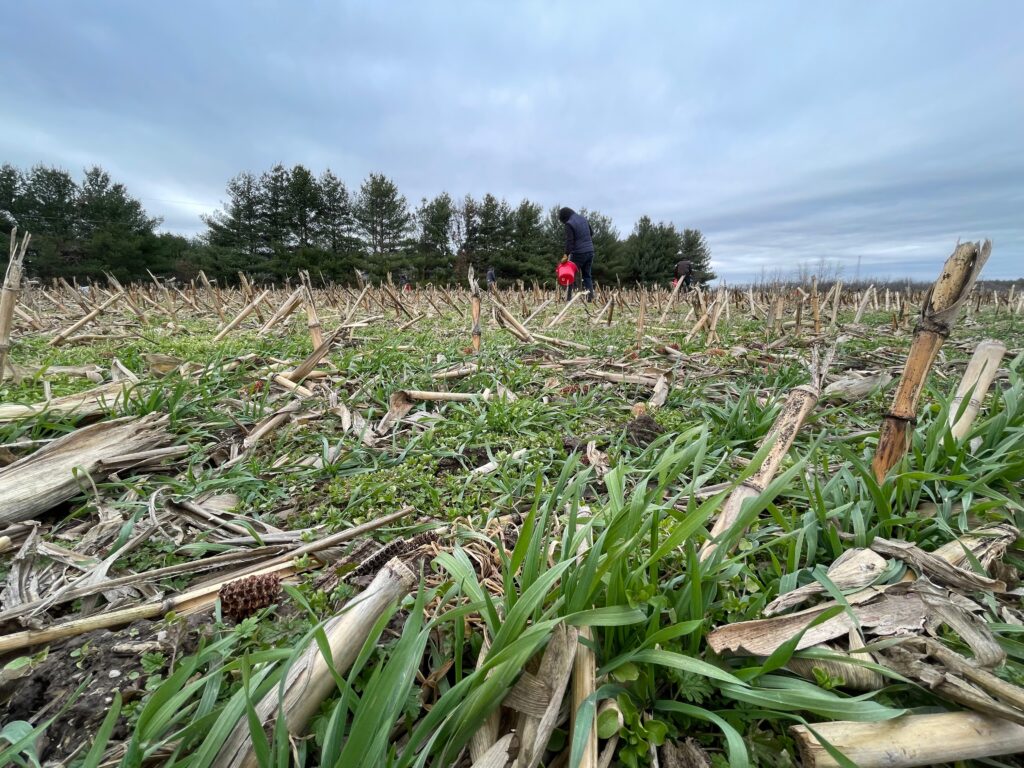
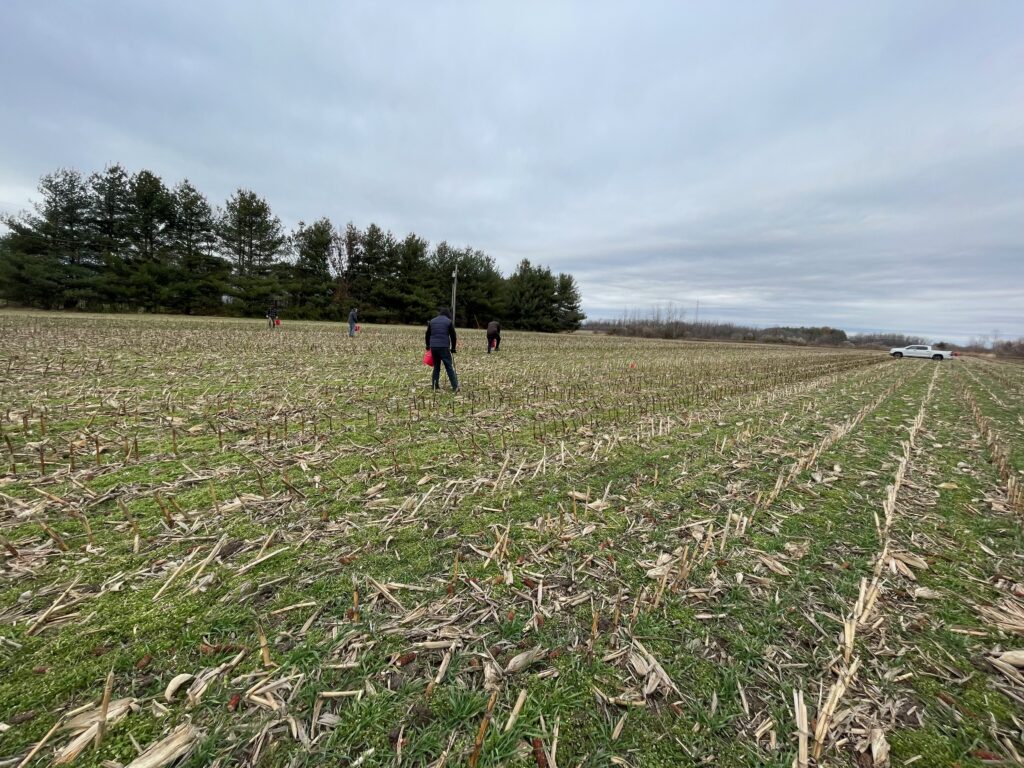



 and then
and then